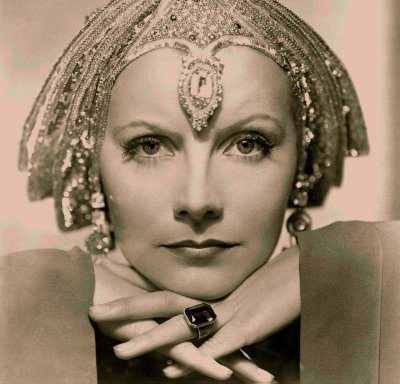GRETA GARBO

Her performance as the doomed courtesan in Camille (1936), directed by George Cukor, was called the finest ever recorded on film; her death scene with Robert Taylor was particularly memorable. She subsequently starred opposite Melvyn Douglas in the comedy Ninotchka (1939), directed by Ernst Lubitsch, which she herself seemed to enjoy making, and was one of her favourites.
Garbo was nominated for the Academy Award for Best Actress for Anna Christie (1930), Romance (1930), Camille (1937) and Ninotchka (1939).
Many of her fellow Hollywood actors and actresses were in awe of Garbo's talent.
"Her instinct, her mastery over the machine, was pure witchcraft. I cannot analyse this woman's acting. I only know that no one else so effectively worked in front of a camera." —Bette Davis
Greta Garbo was considered one of the most glamorous movie stars of the 1920s and 1930s. She was also famous for shunning publicity, which became part of the Garbo mystique. Except at the very beginning of her career, she granted no interviews, signed no autographs, attended no premieres and answered no fan mail.
Her famous byline was always said to be: "I want to be alone", spoken with a heavy accent which made the word 'want' sound like vont. This quote as noted comes from her role in Grand Hotel, however Garbo commented later, "I never said, 'I want to be alone.' I only said, 'I want to be left alone.' There is all the difference."
Garbo kept her private affairs out of the limelight. According to private letters released in Sweden in 2005 to mark the centenary of her birth, she was reclusive in part because she was "self-obsessed, depressive, and ashamed of her latrine-cleaner father."
Some also suggest that Garbo remained single in the United States because of an unrequited love for her drama school sweetheart, the Swedish actress Mimi Pollak. Garbo's personal letters recently released to the public indicate that she remained in love with Pollak for the rest of her life. When Pollak announced she was pregnant, Garbo wrote: "We cannot help our nature, as God has created it. But I have always thought you and I belonged together."
"Garbo's biographer Barry Paris notes that she was technically bisexual, predominantly lesbian, and increasingly asexual as the years went by", and it has been indicated that Garbo struggled greatly with her sexuality, only becoming involved with other women in affairs that she could control.
Her most famous heterosexual relationship was with actor John Gilbert. They starred together for the first time in the classic Flesh and the Devil (1927). Their on-screen "erotic intensity" soon translated into an off-camera romance and by the end of production Garbo had moved in with Gilbert. Gilbert is said to have proposed to Garbo at least three times though when a marriage was finally arranged in 1927, she failed to show up at the ceremony.
She was also linked romantically with actresses Marlene Dietrich, Eva Le Gallienne, Claudette Colbert, Joan Crawford, Louise Brooks, Ona Munson, with writer Salka Viertel, and had a long term and unstable affair with writer/poet Mercedes de Acosta from 1931 to 1944, which ended badly. [11] De Acosta reportedly loved her for the remainder of her life, although Garbo did not return that love.

0 Comments:
Post a Comment
<< Home